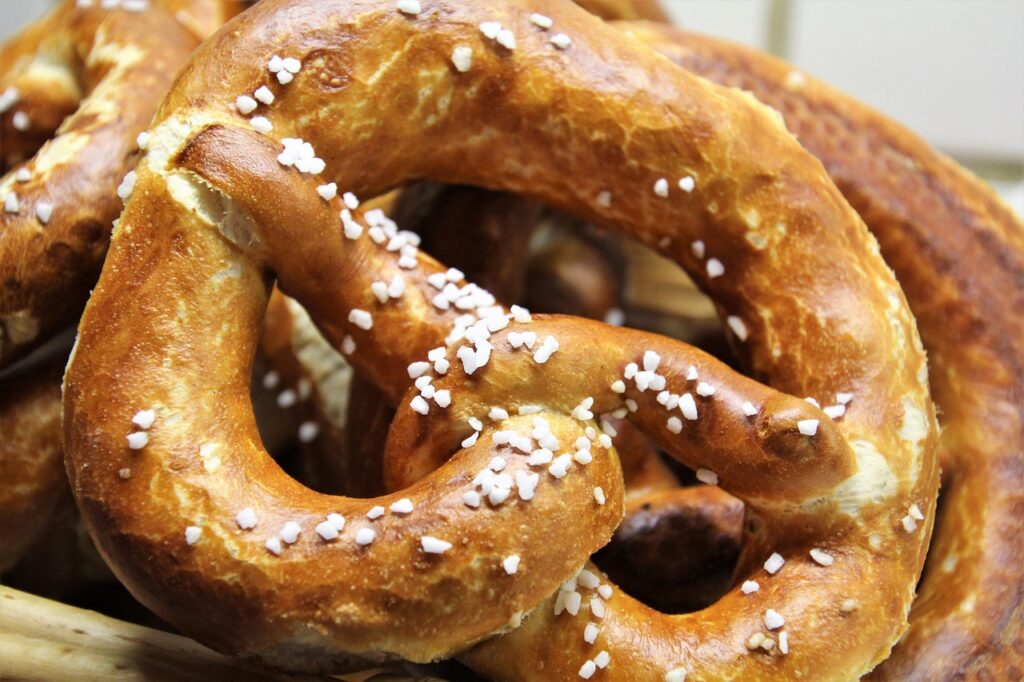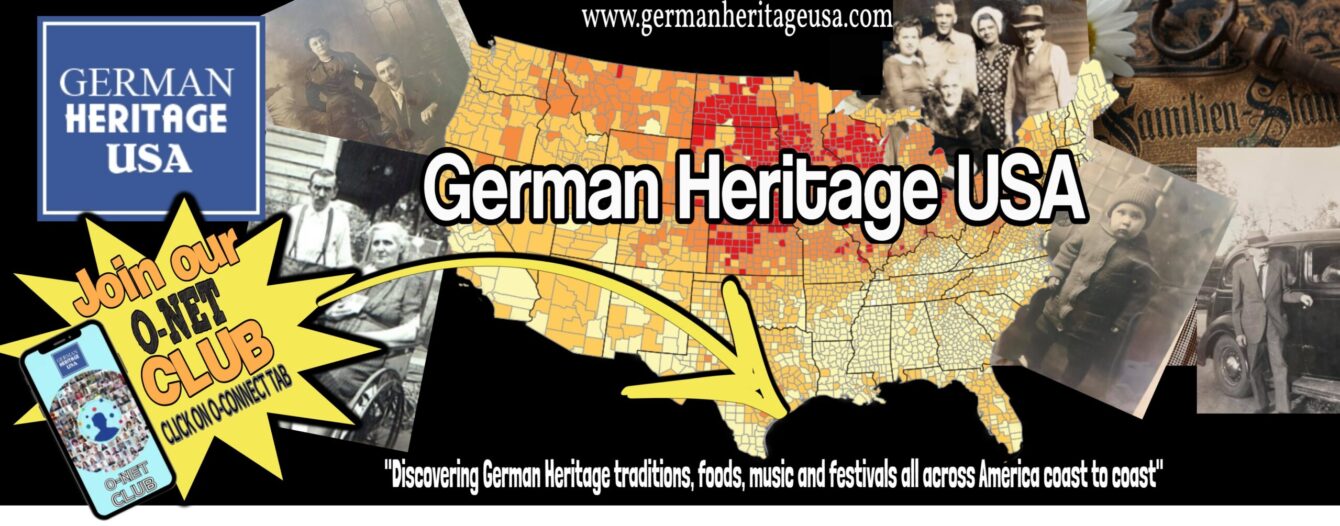The Delightful Journey of Pretzels: From Germany to America
GERMAN HERITAGE USA | AFFILIATE DISCLAIMER: This post may or may not contain affiliate links which means we may receive a commission for purchases made through links. We will only recommend products that we have personally used or that we truly trust. Learn more on our Private Policy and Disclaimer Page located under our Terms Of Service tab above.
When it comes to iconic snacks that have left an indelible mark on American taste buds, few treats can match the popularity and unique charm of pretzels. These salty, twisted delights have a long and fascinating history, originating in Germany and finding their way into the hearts (and stomachs) of Americans across the nation. In this journey through time, we explore how German pretzels made their way from the old world to the new, becoming a beloved culinary tradition in the United States.

The story of pretzels dates back to the early Middle Ages in southern Germany, where monks in monasteries began baking these distinctive snacks as a reward for children who learned their prayers. The shape of the pretzel, often associated with arms folded in prayer, quickly became a symbol of spiritual unity and blessing. As the years went by, this twisted bread gained popularity and began to be sold by bakers in local markets.
With waves of German immigrants arriving in America in the 18th and 19th centuries, pretzels soon found their way to the shores of the New World. These immigrants brought not only their hopes and dreams but also their cherished culinary traditions, and pretzels were no exception. The Pennsylvania Dutch, a German-speaking community, played a pivotal role in introducing pretzels to the American culinary landscape.
The Pretzel Bakery Boom
The turn of the 20th century saw a significant surge in pretzel consumption, as bakers and entrepreneurs began establishing pretzel bakeries across the nation. In 1920, Julius Sturgis opened the first commercial pretzel bakery in Lititz, Pennsylvania. This marked a turning point, transforming pretzels from a regional specialty into a snack enjoyed by Americans from coast to coast.
A Pop Culture Phenomenon
As the decades rolled on, pretzels not only remained a cherished snack but also became a pop culture icon. Their versatile shape made them perfect for dipping into mustard or cheese, adding to their appeal as a convenient and flavorful snack. The unique combination of salty and crunchy soon turned pretzels into a staple at ballgames, movie theaters, and even family gatherings.
From Street Carts to Gourmet Delights: Modern Pretzel Innovation
In recent years, pretzels have undergone a renaissance, with innovative twists on the classic recipe. Artisanal bakeries have sprung up, offering gourmet pretzels infused with a variety of flavors, from sweet cinnamon sugar to savory jalapeño cheddar. Additionally, pretzel-based dishes like pretzel buns for sandwiches and pretzel-crusted desserts have become popular in upscale restaurants, showcasing the adaptability of this humble snack.

Conclusion: A Twist of Tradition and Innovation
From their humble beginnings as a reward for young learners to their current status as a beloved American snack, the journey of German pretzels to the United States is a testament to the enduring power of culinary traditions. With their rich history, symbolic significance, and delicious taste, pretzels continue to be a delightful link between German heritage and American culture.
Did you know that “Bretzel” is the word that takes us back to the heart of Germany’s pretzel passion? Yep, you heard it right! Imagine yourself strolling through the cobblestone streets of medieval Germany, circa the 12th century. It was in those lively days that the term “Bretzel” graced the lips of the locals.
Fast forward a bit, and we find ourselves in the midst of an enchanting language transformation. The winds of language evolution swept through, and “pretzel” emerged as the star of the show in English. The word “pretzel” dances off the tongue like a joyful jig, and it has become the go-to spelling for most English speakers.

But don’t be fooled, my curious time travelers! While “pretzel” may be the reigning champ in the English language arena, “Bretzel” still holds a special place in the hearts of those who treasure the traditions of yore. It’s like finding a hidden gem in the annals of language history.
Now, let’s talk about these delightful treats themselves! Imagine sinking your teeth into a warm, toasty creation in the shape of a whimsical knot. These treats have been enjoyed by folks since as early as the 6th century—yes, you heard that right! Monks in monasteries would craft these delectable knots from simple ingredients, transforming them into edible works of art.
Fast-forward once more to the present day, and you’ll discover that Germans are the true pretzel aficionados. They don’t just munch on pretzels; they celebrate them as if they were national treasures! In fact, they might even raise an eyebrow at the mention of “pretzel” as the go-to term. The genuine spelling, according to the pretzel purists, is “Bretzel,” carrying with it a sense of tradition that harks back to those good ol’ days.
So, my time-traveling companions, remember this: whether you’re team “pretzel” or team “Bretzel,” the joy of these twisted treats transcends the ages, connecting us to history, culture, and the simple pleasure of biting into a knotted delight!
So, the next time you savor a salty, twisted pretzel, remember that you’re enjoying a snack that has traveled across time and continents, uniting flavors and traditions in every savory bite.
